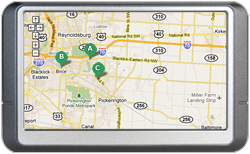How It's Installed.
Proper windshield glass
installation can prevent injury
and future damage.

Before You Have Your Windshield Installed
Please ask the company you are considering to use if they:
- Use glass that matches the performance specifications in your car today
- If they will allow you to choose the brand of glass you would like installed in your vehicle
- If they are a AGRSS (Auto Glass Replacement Safety Standard) registered member (or if they follow a equivalent safety standard)
- Use the manufacturers recommended urethane adhesive
In addition, you should understand the basics of installation and post-installation to protect yourself, your passengers and your investment.
Installation Basics
NOTE: Before you allow someone to perform an auto glass replacement, be sure that the installation facility is clean, safe, and reputable. Auto glass replacements should not be performed outdoors in severe weather.
- When selecting your glass, it is recommended that you use a brand that meets or exceeds the current performance specifications in your car today (Read our other pages to find out more on this)
- Before your installation, check with your installer to be sure that the urethane, primers, and activators are within use-by dates. If they are not, insist on proper materials. If the work has already started, it should be stopped, and started from scratch to ensure your safety.
- After removing your damaged windshield glass, the installer will strip down the old urethane then clean and prime both the glass and the area on the vehicle where the glass is to be set. Check to see that your installer is wearing gloves to avoid contaminating the bonding surfaces.
- Verify that your installer is replacing the urethane with one that is correct for your installation.
- After cleaning and priming the glass and vehicle, the installer will set and deck the glass part and replace your moldings, clips, and fasteners.
- That's it! When it is safe to drive, your installer will return your vehicle to you. Now it's time to check your car to make sure you are satisfied with the work.
Post-Installation
You may not be a glass expert, but there will be signs if the installation is done incorrectly. Be sure to inspect your car for the following:
- The glass should be flush with the body of your vehicle. (this is where wind noise can occur)
- The windshield should be centered. That means the distance between the left side and the right side of the windshield and the body of your car will look the same.
- There should be no visible gaps around the edges of the windshield. The molding should fit snugly around the entire edge of the new windshield.
- Your vehicles equipment should perform as it has in the past (e.g. Air Conditioning, Level of Cabin Noise, Rain Sensors, Lane Change Sensors, etc...)

Attention Drivers!
EZ-Kool is best in glass!






